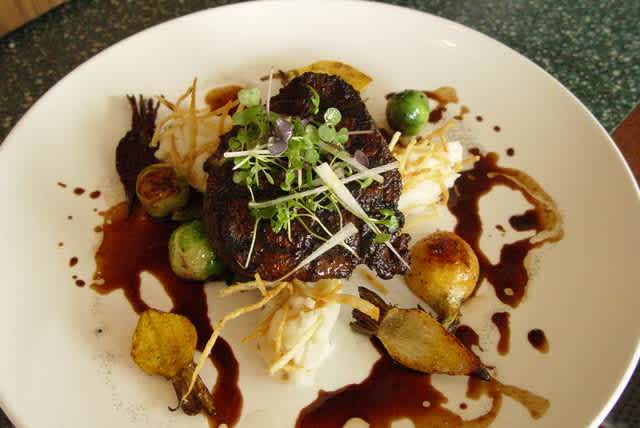Venison 101: A Culinary Guide
Michigan Sportsman 05.10.11

I thought I’d pass along some tips that may help you get the most enjoyment after you tag the big one.
First we’ll talk about Venison.
Venison is lean. It’s made even leaner by the fact that the fat is not pleasurable at all, as it coagulates at a much lower temperature than farm raised animals. What that means is if you add venison fat to a sausage recipe when you eat it and take a drink, it will turn to Vaseline in your mouth. So, trim off all the fat. We can add a more palatable fat later.
There are 2 major factors in how your animal will taste.
- Diet – A Whitetail from the Rocky Mountains that lives in big woods will have a very different flavor profile than one from the agricultural region in Illinois, for example.
- Processing – How the animal was killed and handled during butchering. Gut it, skin it and cool it as quickly as possible.
Next let’s break these up into 2 parts.
- Texture – How tough, tender, stringy etc…physical traits in mouth feel, “bite” and texture.
- Flavor – Gaminess, piney or sagey-ness etc.
Texture
The “Whys”
- The older the animal and/or rougher the terrain the tougher it’ll be.
- The harder the muscle works, the tougher the meat will be.
- The leaner the diet, the tougher it will be. The more protein rich, the more tender.
- The “Fresher” the tougher. Letting an animal hang or age properly goes a long way in tenderizing it through natural enzymes breaking down the tough connective tissue. I recommend 7-14 days for a whole carcass depending on age and size at around 41 degrees.
- The thinner, the more tender. The thicker the tougher. Thin slices off a roast or raw meat sliced and pounded thin (like scallopine) before cooking will always work.
The “Hows”
Roasts
- Don’t boil it.
- Boiling meat is a great way to waste time and ruin meat. Simmer! Tiny bubbles! Simmer has the heat without the agitation. Bring it to a boil and quickly lower the heat to low simmer, as low as you can get it and still get a bubble every 2-3 seconds. Cover it and cook till tender, 1.5-4 hrs depending on size.
- Use a liquid such as wine, stock, broth, water, beer and so on. The meat should not be submerged in it, but a couple inches in the bottom of the pot will help keep it moist and cook evenly.
- Add fat. Drape raw bacon over the top before you put the lid on, rub a little butter on top the last 2-3 minutes of cooking etc. This will all but guarantee it be moist and not dry out.
Thinner cuts and steaks
- Don’t overcook it. Medium rare to medium will be most tender.
- Don’t boil it; simmer instead.
- Pound it or Jaccard it. A Jaccard is a great tool for the wild game chef and well worth the price, in my opinion. Pounding with a meat mallet or Jaccarding breaks down the connective tissue by force.
- Marinate it. I’m not a big fan of marination in general but it does help a little. Acid tenderizes the meat.
Flavor
The coppery, bloody, “gamey” flavor can be offset by a myriad of ingredients. Acids and sugars mask it well, but you may need to add fat to offset the acid. Adding fat is effective because the venison is generally so lean the fat will help with mouth feel and “roundness” anyway.
Examples of acidic ingredients are:
- Vinegar (Balsamic is great, apple cider works as well)
- Wine
- Beer
- Fruits: currants, blueberries, cranberries, cherries, raisins etc.
If you want to test this take your standard venison tenderloin and cook half of the cut in a hot pan with whatever gravy or sauce you choose. Now add 1/2 Tbsp of red wine vinegar to your sauce and taste it again. You’ll see what I mean.
Straight vinegar also goes a long way. Just add a touch to the sauce. If you add too much, a little sugar will help even it out and add a little butter or oil to smooth it over. I’ll often mix Cider Vin and Sugar and cook till it’s a syrup and then keep that around the kitchen in a small bottle to add as I need it.
Now unless you like sweet and sour everything, you may need to smooth some of them out with a little fat. Adding a little pat of butter to the sauce at the end or a drizzle of good olive oil will round these out and bring the flavors to the meat instead of having the meat overpower everything else.

